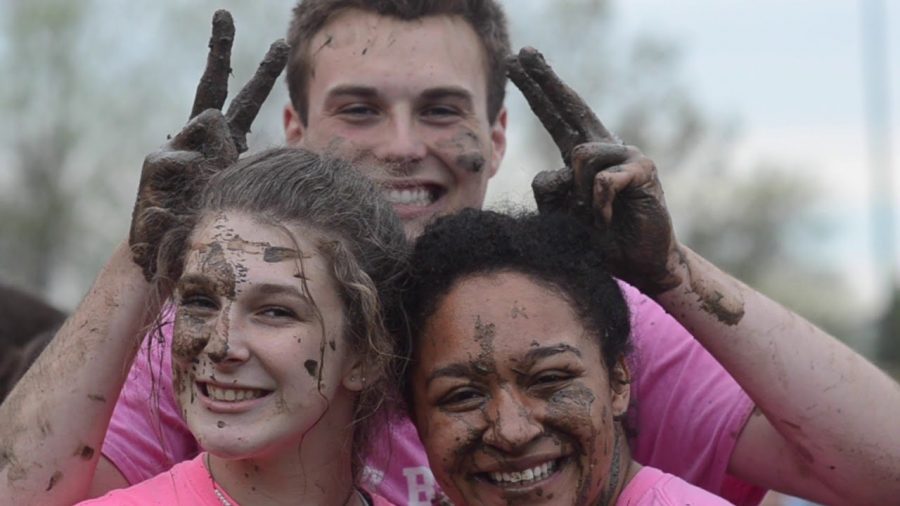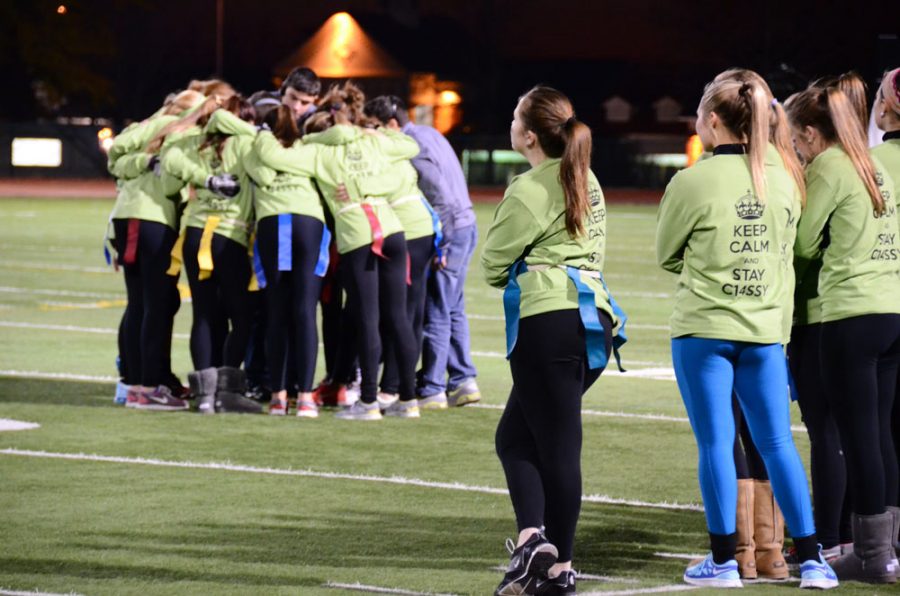Peer pressure is like dominoes. One domino knocks into another, and the process continues until every domino hits the ground. It’s contagious, like a cold infecting every student through the passing of dry coughs and snotty sneezes.
Remember those videos they showed in health class? The old ‘90s ones with the so-so acting that tried to shine some light on peer pressure or smoking?
Those videos, though helpful if one were pressured in a school bathroom to smoke, aren’t as effective as they used to be. They’re missing two very important types of peer pressure — indirect and positive — which happen in real life just as much as direct and negative peer pressures do.
Freshman Erich Untershutz, a debate student, knows the difference between the two.
“There are two categories of peer pressure: passive and aggressive,” Untershutz said. “Passive is more like ‘Hey, you should see this movie!’ It’s in a nice way, something my friends would say. Aggressive is pressure from stubborn and mean people. They’ll say, ‘You have to do this, and if you don’t, I’ll be disappointed.’”
Passive — or positive — peer pressure usually comes from friends or family, where someone suggests a person to do something that is beneficial to them.
“[Positive peer pressure] is a good thing,” freshman Isabel Thoroughman said. “It could stress you out, having to do work or trying to get good grades on tests, but it’s good peer pressure and it’s something you should do anyway.”
Thoroughman has friends in honors and advanced placement classes who work and study every night. They talk about their habits often, which influences Thoroughman to achieve more through her high school career.
She believes this type of support system and positive peer pressure betters a person and their actions mainly because the tasks they’re being “pressured” to do are rewarding in the end.
Guidance counselor Rachel Reed said influences from peers can have a positive or negative impact, depending on the situation.
“There are positive influences from your peers that you can label positive peer pressure,” Reed said. “I’ve had students before who are trying to stop doing something negative like smoking, for example, and they have friends that are there to be an accountable group for them to make sure they stop that negative behavior. You can sort of label that positive peer pressure.”
Positive pressure influences teens as much as negative pressure does. People give in to hanging out with friends over studying just the same as kids listen to their parents and study instead of hanging out with friends. Its impact on a person is just as strong.
“[Positive] peer pressure brings out my competitive side,” freshman Anusha Mishra said.
The other type of peer pressure that isn’t taught in health class is indirect peer pressure, or what “everyone does” without people specifically telling others to do it, too.
“To me, peer pressure isn’t direct,” Mishra said. “People don’t just walk up to you and say, ‘You have to do this.’ It’s more like you see someone wearing or doing something and you feel like you have to [do it too].”
High school creates the biggest “everyone’s doing it” lies of all places.
Because this stereotype reaches students who are a part of a small range of ages from similar backgrounds, it fabricates a perception that if so many people in one school are doing something, then everybody must also be doing it.
“[Peer pressure to me is] mostly just when everyone else doing something and me being the only one not doing it,” junior Tanya Ramadoss said. “I tend to feel left out and awkward if I’m not doing what everyone else is.”
The Hewlett Packard Enterprise Community conducted an experiment about the matter and found out 22 percent of 600 volunteers were swayed to pick one picture of an object over another based on how many “likes” the pictures had.
This proves indirect peer pressure influences decisions just like direct peer pressure. With these statistics, many question whether education on the warning signs of positive and indirect peer pressures in classrooms is enough.
“[To overcome peer pressure] you have to have a positive support system of trusted friends, parents, counselors, teachers or coaches,” Reed said. “You have to have enough confidence in yourself, in your standards and your goals, so that you can realize that even though other people are choosing to do certain things or certain behaviors, you know that’s not what you want to choose to do.”
Mishra is someone who knows what she wants and doesn’t want in life.
She prides herself on being a strong-minded student whose opinions and beliefs come from her own mind and is too confident in them to change them.
“I don’t give into peer pressure,” Mishra said. “If it seems like I do, it’s because I actually like it, not because someone pressured me into it.”
Categories:
Submitting to pressure
May 23, 2016

art by Joanna Yu
0
More to Discover


















































































